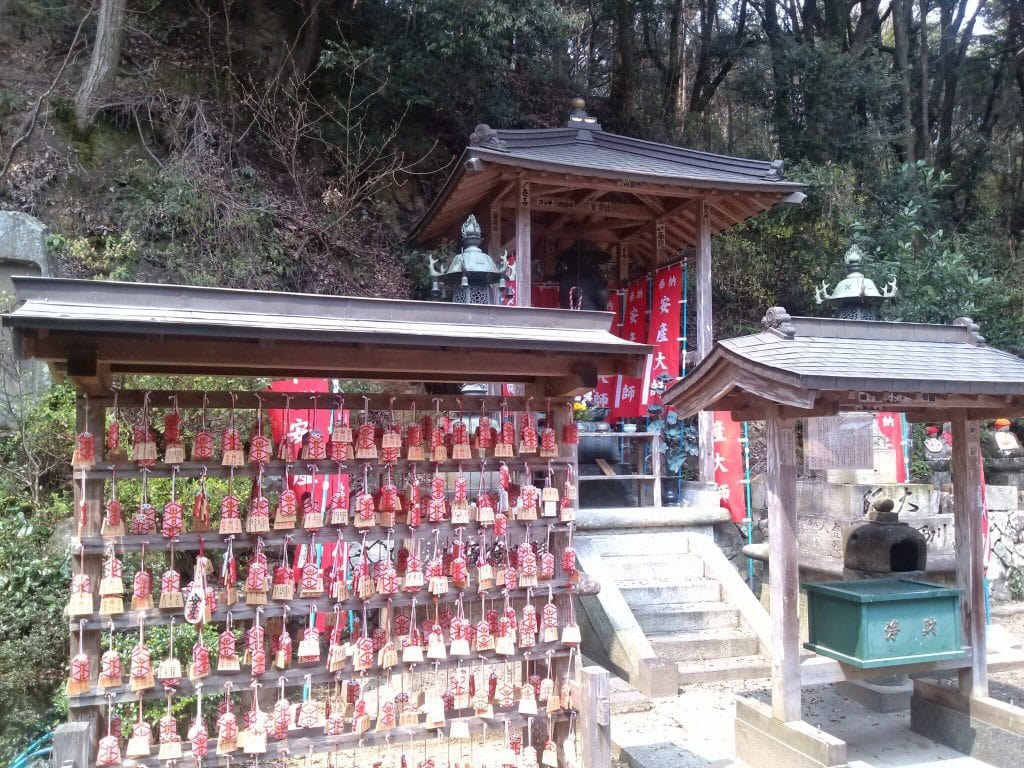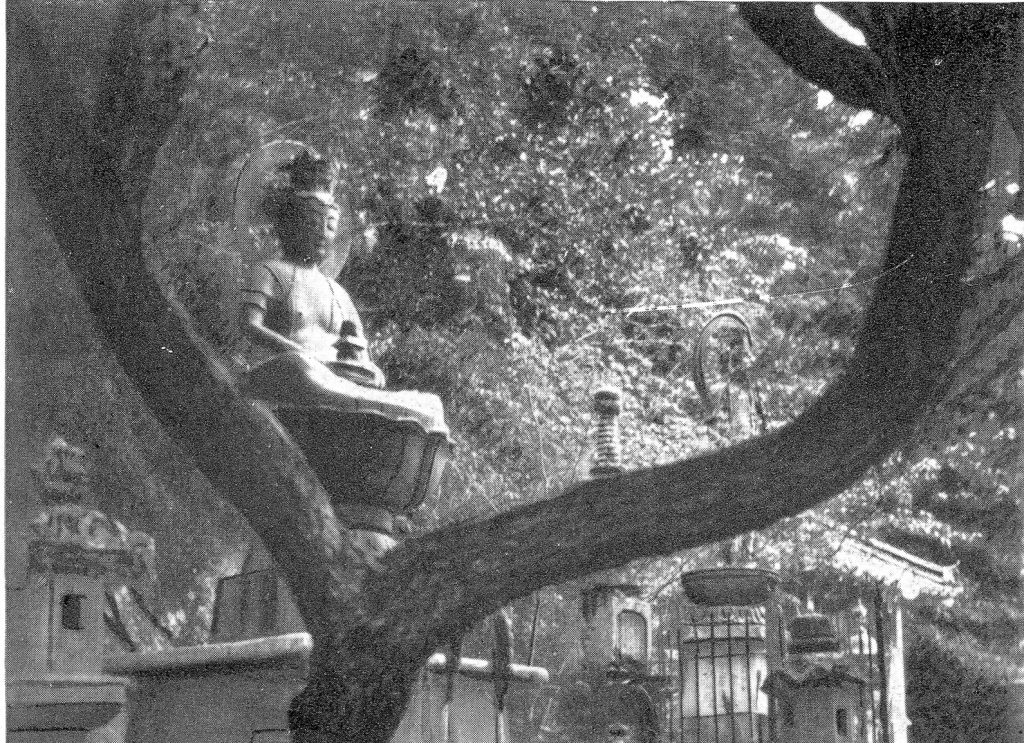At about the midway point along the quiet route between Temple 1 to 2 is a reconstructed World War I German POW camp that was used as a set for the movie, Baruto no Gakuen (2007). The set, which was on a much larger lot located beside Oasa Hiko Shrine, north of Ryozen-ji, had to be dismantled and removed after the three-year land lease expired; yet local people wanted to somehow preserve it and make it open to the public. As a result, it was rebuilt with fewer buildings at this new and smaller location.
Admission is 400 yen and the tour starts with a five-minute clip from the movie. A Japanese guide shows you around and explains what seemed to be very relaxed camp conditions. Included in the price of admission is a coupon for a free cup of tea or coffee at the canteen where they also sell fresh bread made using a stone oven on site. If have you more time and are interested in seeing the site of the original POW camp, head north from the movie set for about three minutes.

Back on the pilgrim path, you will soon reach Temple 2 and after passing through the red temple gate you will see the wonderful gardens called Unkai no Jōdo or “the Pure Land on a field of clouds.” Look carefully for among the bushes and rocks, are some old short stone pillars, which are actually very old henro michi (pilgrim path) markers that have been moved from their original site. Follow the concrete path along the garden and you will come to a short flight of stairs. To the left is the gigantic chōmei sugi (cedar of longevity) said to have been planted by Kōbō-Daishi in the 9th Century. There is a rope on one side of the tree, which according to the accompanying sign in English states that you will feel a strange power when you touch it because you are indirectly touching this revered tree.
Proceed up the steep flight of stairs to reach the main hall and Daishi hall. The main hall contains a statue of the main deity, Amida Nyorai, said to have been carved by Kōbō-Daishi. For hundreds of years, pilgrims have believed in the power of Amida Nyorai and have offered words of thanks to Amida for illnesses and disabilities cured. In fact, an American anthropologist, Frederick Starr, who visited here in 1921 wrote in his diary, “Here we noticed crutches left by [the] lame [who had been] miraculously cured.” One example of a miracle tale that occurred here is noted in “Shikoku Reigen Kioki”, a 3-book set containing 100+ stories published in 1825:
“During the summer of 1808 at Gokuraku-ji a man called Haiya Benzō from Kajiyamachi town in Wakayama prefecture and his nine-year-old son called Kamekichi were on the Shikoku pilgrimage. From the port of Muya in Tokushima, Kamekichi came down with a high fever that gradually got worse. The inside of his mouth turned black and it seemed like his life was in danger. Benzō prayed with all of his heart to Amida Nyorai at this temple, soaked his miei (a paper slip with an image of a Buddhist deity) in water and gave the water to Kamekichi to drink. Strangely, after doing so, Kamekichi said that he wanted to eat chazuke (green tea poured over cooked rice and toppings). Until now, he could only digest soft food like gruel, but now, his wishes came true and he could eat chazuke. Gradually his condition improved and he and his father were full of joy. They shed tears of happiness and with heartfelt thanks expressed words of gratitude to Amida Nyorai.”

Beside the main hall is the same statue that Bohner took a photograph of back in 1927. Beside it you can see a very small statue that you can pick up and make a wish. If it feels light then your wish will come true. There is also a board of many ema (votive tablets) that some mothers have hung here wishing for safe childbirth. Beside it is a statue called Anzan Koan Daishi (safe childbirth, safe childhood) that was presented by a woman from Osaka during the Meiji period (1868-1912). It is believed that despite being very sick she became pregnant and when she prayed for a safe childbirth, Kōbō-Daishi appeared in her dream and said, “Go on the Shikoku pilgrimage.” She made it to Gokuraku-ji and began to feel labour pains. When she eventually returned home, she safely gave birth to a boy and in gratitude presented this statue, which has attracted many people from around the country ever since.
After visiting Gokurak-ji, Temple 3, Konsen-ji is only a 2.5km walk away.
This article was first published in the May 2014 issue of Awa Life.

